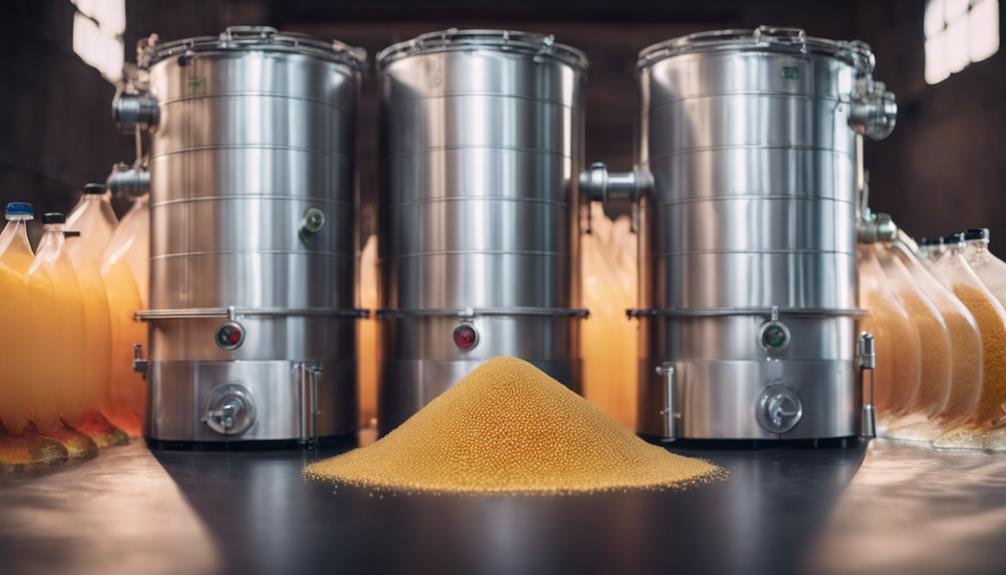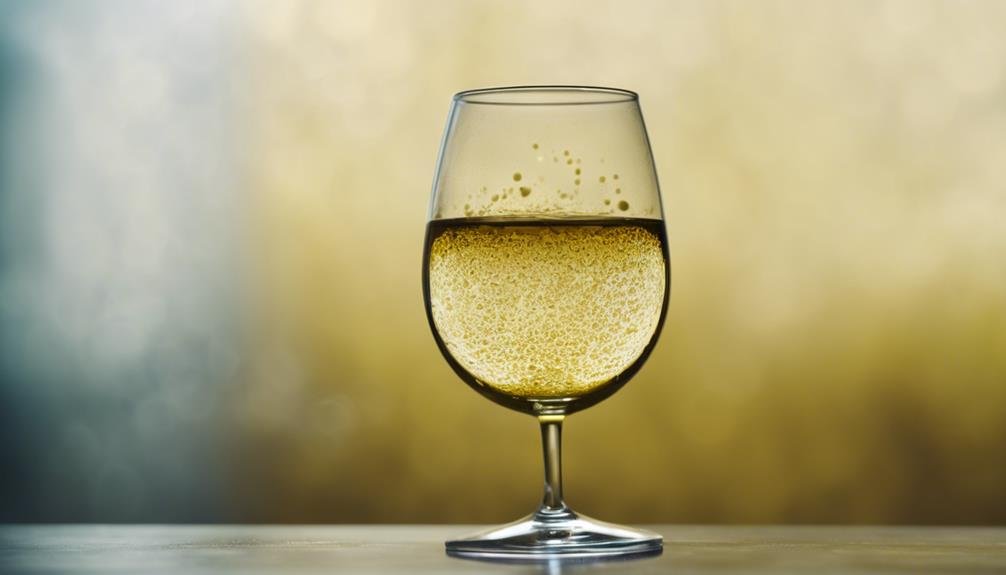Yeast's role in winemaking is pivotal, shaping the diverse array of flavors found in wine. Different yeast strains impact the taste and texture, influencing the overall sensory experience. Yeasts on grape skins introduce complexity, while fermentation with specific strains can enhance or diminish grape flavors. Commercial and native yeasts both play an essential part in defining wine characteristics, sparking a debate within winery practices. Tasting yeast-influenced wines allows for a deeper understanding of how yeast influences flavor profiles and textures, showcasing the unique traits imparted by various strains. The intricate interplay of yeast in winemaking continues to offer an intriguing exploration of flavors.
Yeast Diversity in Winemaking
Yeast diversity in winemaking plays an important role in shaping the intricate flavors and characteristics of wines.
The yeast biodiversity present during fermentation dynamics impacts the evolution of wine flavors. Different yeast strains contribute to the sensory perception of wines, influencing the overall taste and aroma profile. This diversity in yeast populations on grape skins contributes to the complexity of flavors in the final product.
Yeasts not only convert sugars into alcohol during fermentation but also introduce secondary flavors that enhance the overall sensory experience. Understanding the role of yeast evolution in winemaking is essential for winemakers to harness the full potential of different yeast strains and create wines with unique and diverse sensory characteristics.
Impact of Yeast Strains
The selection of specific yeast strains in winemaking greatly influences the final sensory profile of wines. Yeast fermentation dynamics play an important role in shaping the flavor and aroma characteristics of the end product. Factors such as yeast strain selection, along with yeast metabolism variations, contribute to the diverse range of flavors expressed in wines.
Understanding how different yeast strains interact with grape sugars during fermentation is essential for winemakers to achieve their desired flavor profiles. Through the intricate process of fermentation, yeast strains can have a substantial impact on the overall taste and texture of the wine. The following highlights showcase the importance of yeast strain selection in winemaking:
- Yeast strain selection impacts flavor expression
- Yeast metabolism variations influence wine characteristics
- Different yeast strains can result in varying textures and tastes
- Specific yeast strains can enhance or diminish grape flavors
- Yeast strains from distinct regions can impart unique wine characteristics
Commercial Vs. Native Yeasts

During the winemaking process, the utilization of commercial and native yeasts presents winemakers with distinctive choices that can greatly impact the final characteristics of the wine. The fermentation debate between commercial and native yeasts is a central aspect of winery practices. Commercial yeasts, tailored for specific conditions, help prevent stuck fermentations but may affect wine individuality.
Some winemakers are reverting to custom wild yeast fermentations, reminiscent of historical winemaking practices. In contrast, native yeasts, historically influencing wine flavors, are being maintained in some wineries as a trade secret. Studies suggest that wines made with local yeasts exhibit higher polyphenol levels, potentially enhancing flavor profiles.
The selection between commercial and native yeasts plays an essential role in shaping the overall taste and texture of the wine.
Yeast Influence on Wine Taste
Understanding how different yeast strains interact with grape sugars is essential in comprehending the diverse flavors and textures present in wines. Yeast fermentation flavors can greatly influence the final taste of the wine.
Here are key points to take into account:
- Yeasts contribute unique fermentation flavors to wines.
- Different yeast strains impact the overall taste and texture of the wine.
- Yeast fermentation can enhance or diminish primary grape flavors.
- Specific yeast strains from different regions can impart distinct characteristics to the wine.
- Native yeast fermentation may result in wines with more pronounced regional traits.
Tasting Yeast-Influenced Wines

When evaluating wines influenced by different yeast strains, one can discern unique flavor profiles and textural nuances that reflect the yeast's impact on the winemaking process.
Tasting yeast-influenced wines allows for a sensory investigation that explores the intricate relationship between yeast varieties and wine characteristics.
Wines made with native yeasts may showcase distinct regional terroir, capturing the essence of the specific vineyard location. Comparing these wines with those fermented using commercial yeasts can highlight differences in flavor complexity and texture.
Frequently Asked Questions
How Do Winemakers Maintain and Propagate Native Yeast Populations?
Winemakers maintain and propagate native yeast populations through careful selection of equipment and fermentation techniques. This guarantees the preservation of unique strains that contribute to regional wine characteristics. Proper sanitation practices and controlled fermentation environments also play vital roles.
Are There Any Health Benefits Associated With Consuming Yeast-Influenced Wines?
Research findings suggest potential health benefits associated with consuming yeast-influenced wines. Studies indicate higher polyphenols in wines made with local yeasts, possibly offering antioxidant properties. Further research is needed to explore the full extent of these potential benefits.
Can the Use of Different Yeasts in Winemaking Affect Wine Aging Potential?
Utilizing diverse yeast strains in winemaking not only impacts flavor profiles but can also markedly influence wine aging potential. Studies show that specific yeast varieties introduce unique characteristics affecting a wine's ability to mature gracefully over time.
Do Winemakers Ever Combine Native and Commercial Yeasts for Fermentation?
Winemakers sometimes utilize hybrid fermentation techniques by combining native and commercial yeasts for fermentation. This approach offers benefits from yeast diversity in creating unique wine profiles. Experimenting with various yeast strains can lead to complex and intriguing flavor outcomes.
Are There Any Ethical Considerations Regarding the Use of Commercial Yeasts in Winemaking?
Ethical considerations arise in winemaking with the use of commercial yeasts. Concerns include environmental impact, production practices, and potential loss of wine individuality. Understanding and balancing these factors is essential for sustainable and responsible winemaking practices.
Conclusion
In the intricate world of winemaking, yeast's diverse strains shape the flavors and characteristics of the final product. Whether using commercial or native yeasts, the influence on wine taste is profound.
By understanding the impact of yeast on fermentation, winemakers can craft wines that showcase unique regional terroir. Just as yeast transforms sugars into alcohol, it also transforms grapes into a symphony of flavors, creating a tapestry of taste that reflects the artistry of winemaking.